Curds and Whey
- Deborah Kade
- Sep 20
- 6 min read

The main dairy to visit in the Emmental region of Switzerland is the Emmentaler Show Dairy located in Affoltern im Emmental. This is the key place to see how the famous Emmentaler AOP cheese is made. The Emmental Show Dairy is located at 801 m above sea level surrounded by hills and valleys.







Eating cheese curds

Drinking whey. I drank both of them.


Cheese is part of Switzerland's national heritage and is as much a feature of the country as clocks and chocolate. Each year, people in Switzerland consume at least 22kg of the dairy product per capita. Swiss cheese is also prized around the globe for its unique flavor, its indisputable quality and its authenticity.
We started the tour with a 3 month piece of Emmentaler.



Cheese was very prized. It was even given as a wedding gift.

Swiss cheese originated from the Emmental region of Switzerland, a valley in west-central Switzerland where cheese-making traditions have existed since at least the early 1300s. While the generic term "Swiss cheese" is used worldwide for any Emmental-style, "holey" cheese, the original cheese is specifically known as Emmental, named after its place of origin.
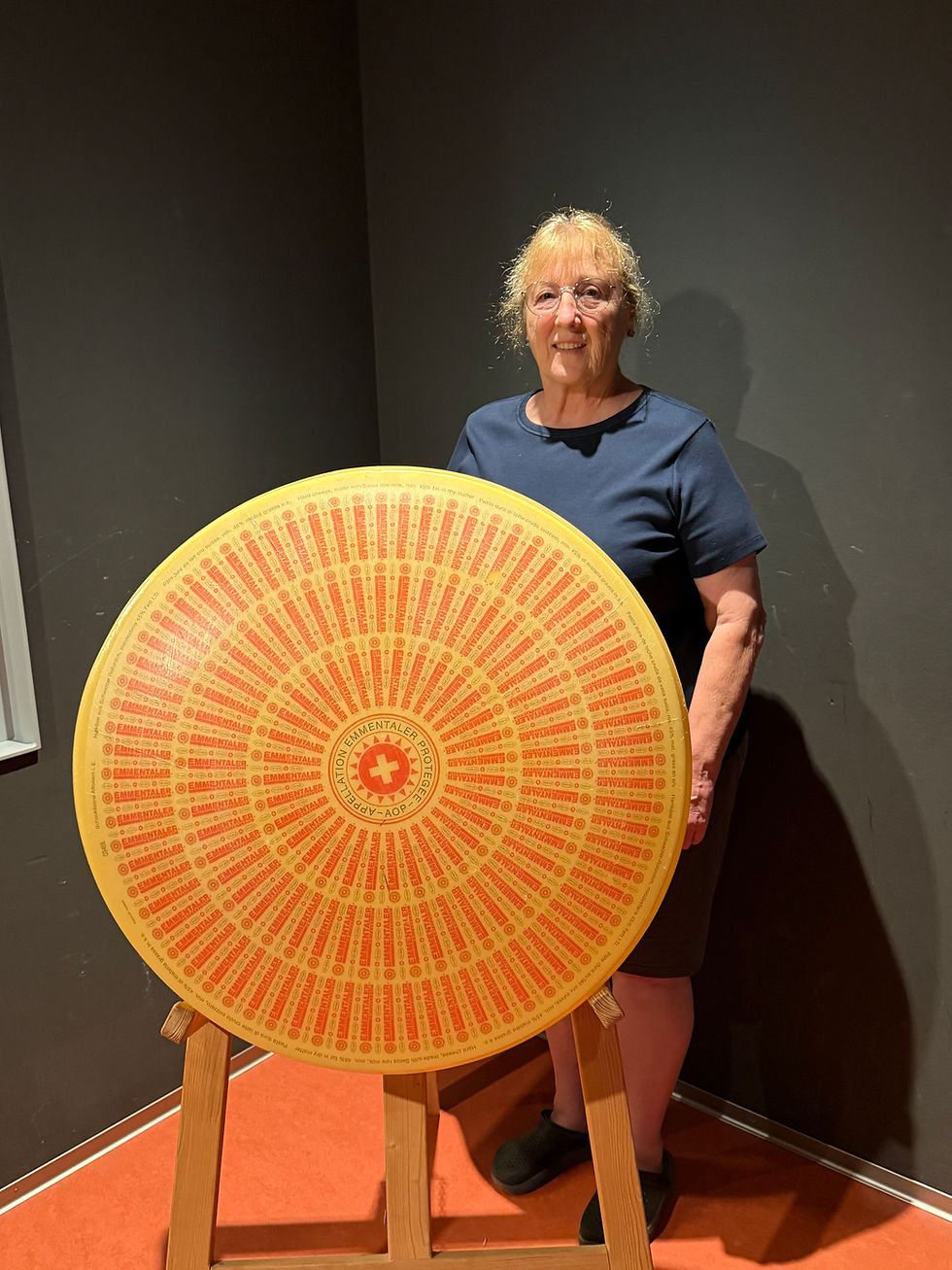

The holes in Swiss cheese, also known as "eyes," are created by carbon dioxide gas produced by certain bacteria during the cheese's maturation process. As the cheese ages in warm rooms, these bacteria release gas, which gets trapped in the forming curds, creating bubbles or "eyes" that are preserved when the cheese cools. The presence of hay particles can also influence the formation and size of these holes, with cleaner milking methods leading to smaller eyes.
The Role of Bacteria and Gas:
"Propionibacterium bacteria: are added to the milk or are present in the raw milk.
During the fermentation and aging process, these bacteria ferment other components of the cheese and produce carbon dioxide (CO2) gas.
This gas forms bubbles within the cheese as it matures in warm, controlled environments."
The Influence of Hay Particles:
"Hay dust and other particulate matter: can act as nucleation sites, or starting points, for the CO2 bubbles to form around.
Historically, with traditional milking methods, hay particles were more common in the milk, leading to larger and more numerous holes.
Modern milking practices and increased hygiene have significantly reduced the amount of hay dust, which in turn explains why the holes in Swiss cheese have become smaller in recent years. "
The Maturation Process:
"After the cheese is produced and brined, it is moved to a warm, aging cellar.
This warmth allows the bacteria to produce the CO2 gas and form the bubbles.
Once the cheese is cooled, the gas bubbles are trapped, resulting in the characteristic holes in the final product."
"Scientists say they have discovered why Swiss cheese has holes in it: apparently, it is all down to how dirty buckets are when the milk is collected. Contrary to what cartoons have suggested over the years, the holes are not made by mice eating their way through the cheese. Nor are they produced by carbon dioxide released by bacteria, as popular scientific belief held. Instead, a Swiss laboratory says they are created by flecks of hay. Agroscope, a government agricultural institute, said "microscopically small hay particles" would fall in to buckets collecting milk, and develop into bigger holes as the cheese matures.The process affects only some Swiss cheeses, such as Emmental and Appenzell."
"Agroscope said the findings explained why fewer holes had been appearing in Swiss cheeses over the last 15 years, since more modern milking methods made it less likely for hay to fall into containers. Scientists reached their conclusions after adding small amounts of hay dust to milk and making it into cheese over 130 days. The research has not been peer reviewed.The theory that bacteria caused the holes has been around since 1917, after findings were published by an American scientist, William Clark, external. The cheese industry calls holes in cheese "eyes". Any cheese without eyes is known as blind."




Swiss cheese has greater energy value, with 380 calories per 3.5 oz. serving vs. the 239 calories in a similar serving of American cheese. Swiss is lower in fat and sodium, making it an easy choice to fit into your healthful diet.
The size of the eyes does not have an effect on the taste of the cheese and can be controlled through temperature, storage time and acidity.
"Low-fat diets: Swiss cheese has lower fat content than most cheeses. Cheddar cheese has 9.4 grams of fat in a one-ounce serving while Swiss has just 7.88 grams. Substitute Swiss for cheddar in just about any recipe for a healthier choice."
"You can still keep your Swiss fresh by wrapping it first in parchment or wax paper (or even a plastic wrap made especially for cheese), then loosely in plastic wrap on the outside. When properly wrapped, your cheese will keep in the fridge for three to four weeks."
Hard cheeses such as cheddar, Swiss and Parmesan can be stored in the refrigerator six months before opening the package and three to four weeks after opening.
"Table manners for soft cheese. Soft cheese is cut from a cheese tray, placed on a plate, spread on a cracker with a utensil, and brought to the mouth with fingers. Table manners for firm cheese. The cheese is sliced, transferred to the plate, speared, and eaten with a fork."
Why is Swiss cheese so addictive?
Casomorphins can attach to neuroreceptors that stimulate the release of dopamine, providing minor stress relief and a euphoric sensation. To simplify, the dopamine release we experience from the properties of cheese is, literally, addictive.
"Swiss cheese is well known for its nutty, bittersweet taste. This is perfect enjoyed on your favorite crackers. Add a couple of other cheese, some grapes, and relishes, and you've got a full cheeseboard. This is such a versatile cheese that you can easily find a beverage pairing for it."



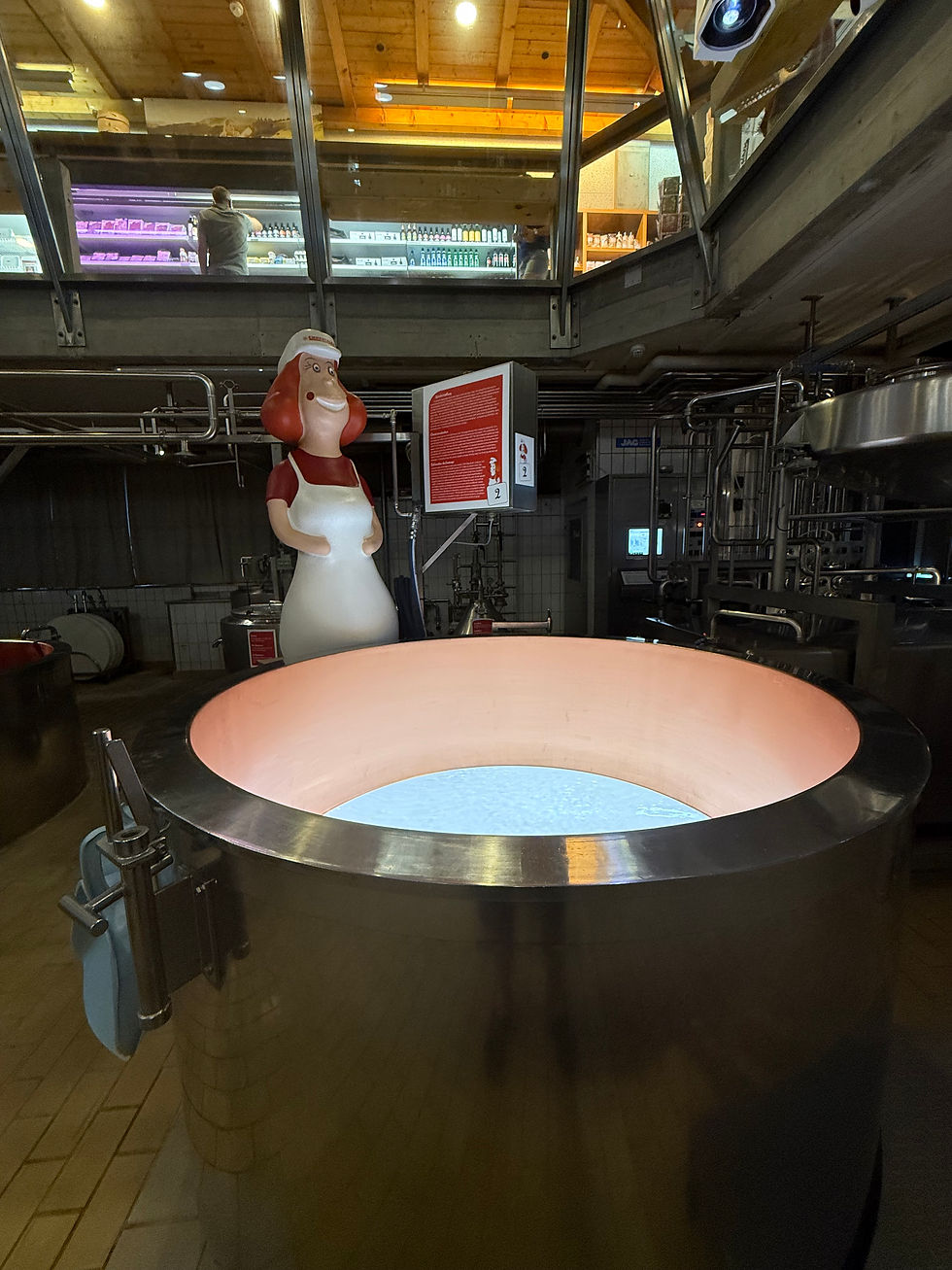








The best part of the tour is to taste the cheese. There is quite a difference in taste as each of the cheeses ages.



Fun to dress up and act up and be silly .



There is a store. So many choices!!!!!!!
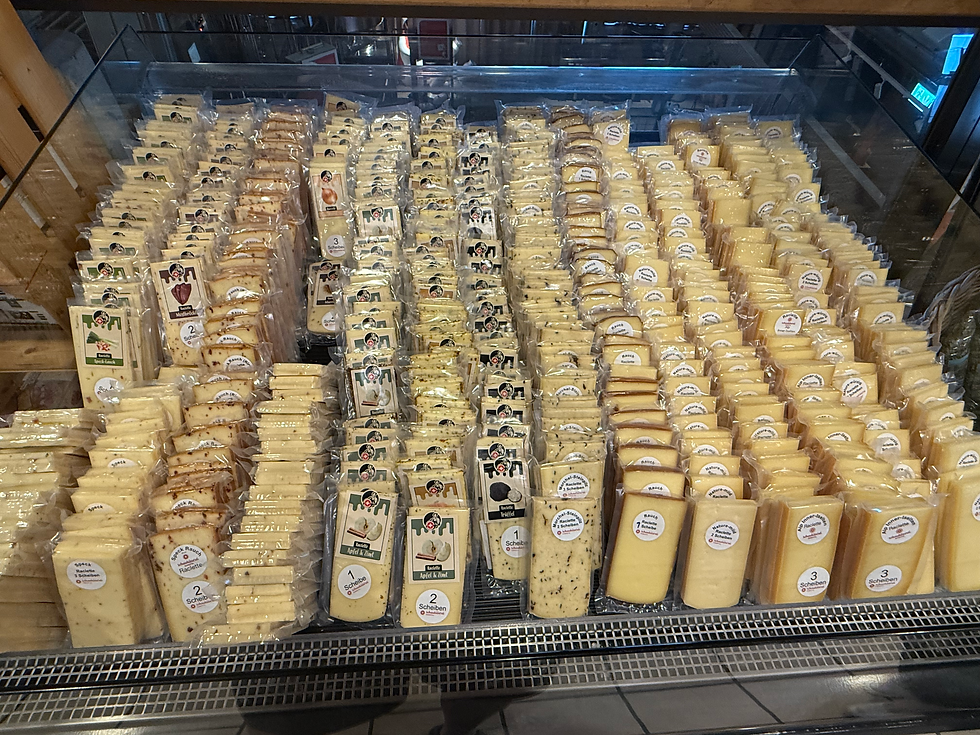











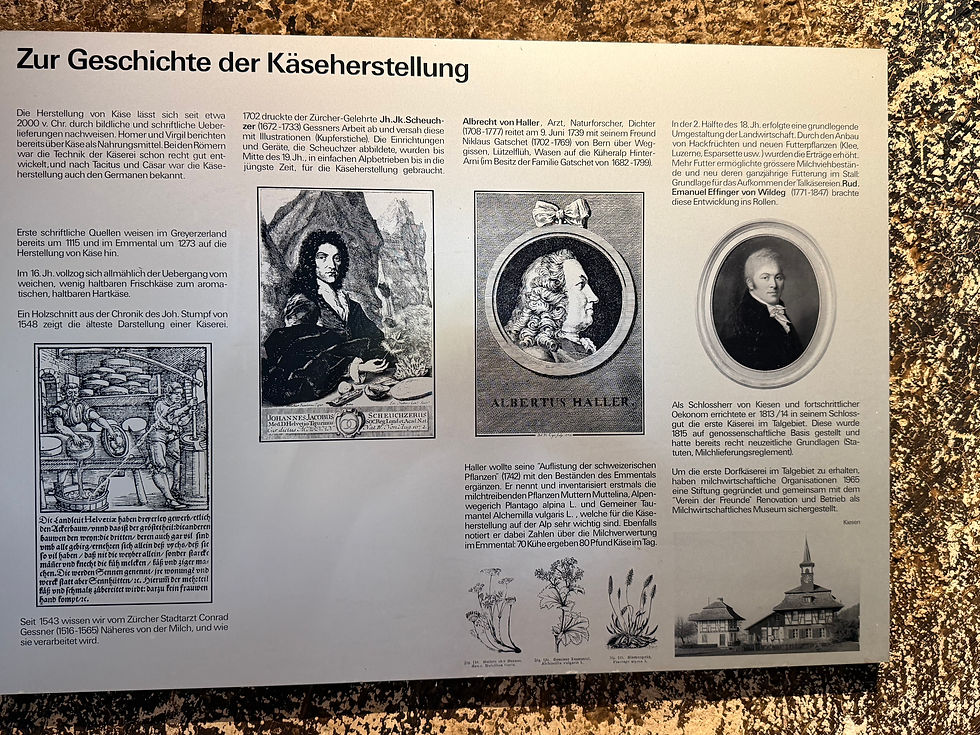



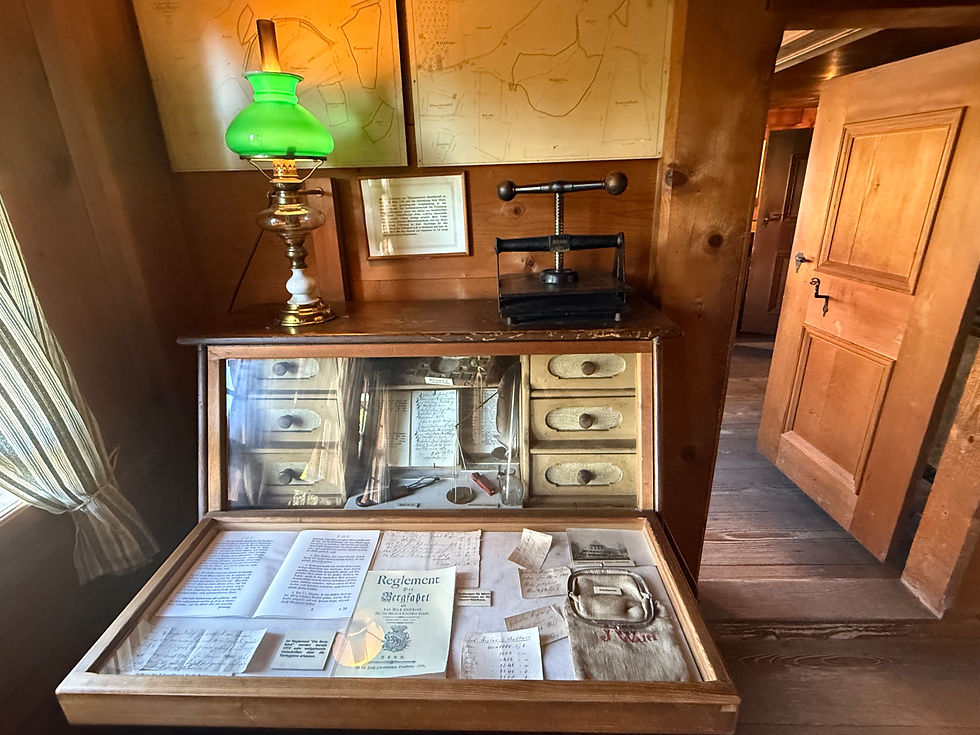




We came into the house after the cheese maker put the cheese in the mold and then the press.



He gave each of us a small cup of whey. I love it but it isn't Michael's favorite.

He emptied out the copper kettle of the whey and then cleaned it very well.
He had help pouring in 200 liters of milk.
As the milk was heating, he took the cheese and cut around the edge and gave us a piece - the curds.


I finished Michael's piece, too.

Next he put in enzymes which help produce the holes.

A group of people then joined us. The cheese maker wanted to know if we wanted to taste the fresh milk. Yummy!

"Last comes the rennet. Rennet is a natural curdling enzyme that is used to make cheese. It ensures that the milk curdles without becoming sour. There are two main types of rennet: animal rennet and microbial rennet. Animal rennet is a mix of the enzymes chymosin and pepsin. It is found in the stomachs of calves, where it allows them to digest their mothers’ milk. Animal rennet is extracted from the stomachs of calves that have already been slaughtered. Therefore, strictly speaking, cheese made with animal rennet is not vegetarian. Microbial rennet, also known as rennet substitute, is made by fermenting mold cultures. Mold cultures produce the curdling enzyme chymosin – the enzyme that can also be found in the stomachs of calves."
Cheeses made using microbial rennet are often popular with vegetarians.
"Once the cheese maker has heated the milk in the copper kettle and added specially selected bacterial cultures, they add the rennet. This has an important role in cheese making because only the rennet can transform the liquid milk into the semi-solid curd mass. In other words, this step is essential in order for the solid curds to separate from the liquid whey.
Emmentaler AOP may be made using animal rennet or microbial rennet, depending on the cheese dairy.










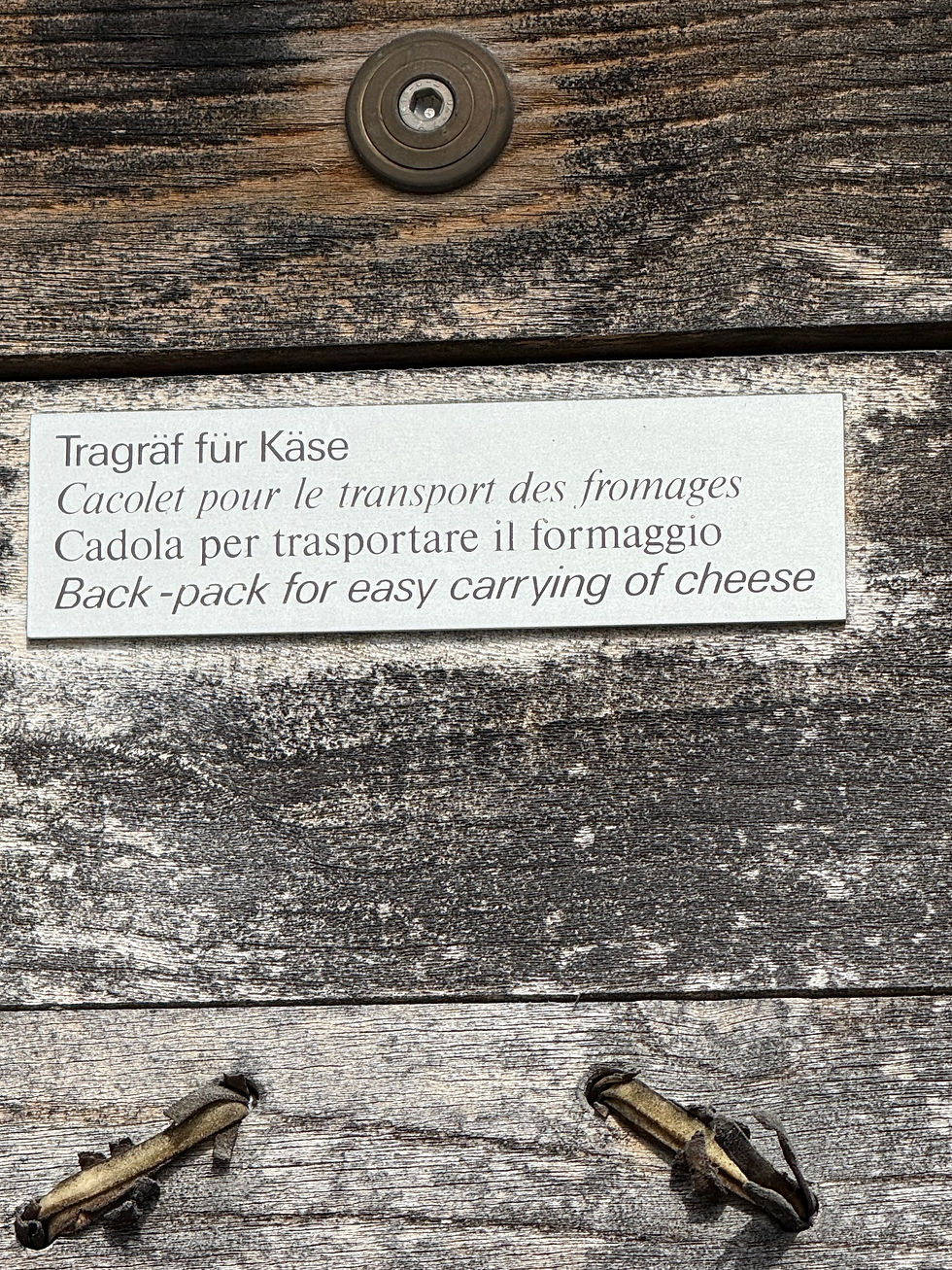


Beautiful rolling hills with large farms in this region.



Coming home, I never tire of the snow capped mountains of the Berner Oberland.


Always so special when we can meet up with Tanja, Syrena, and Manu. Tonight we went out to Salzano!





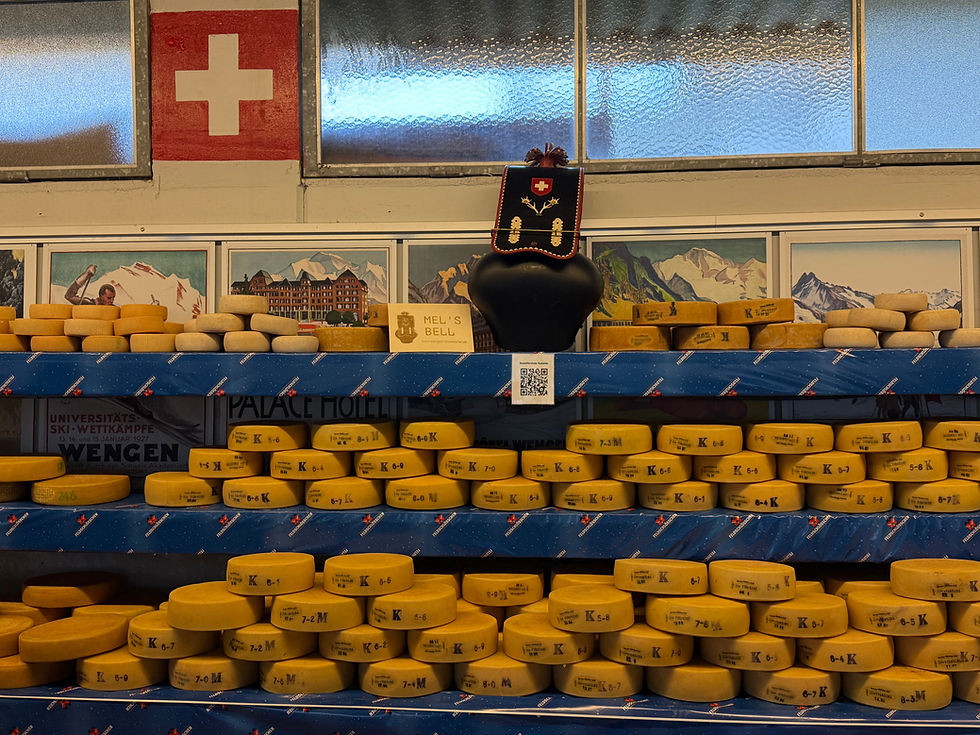
Comments